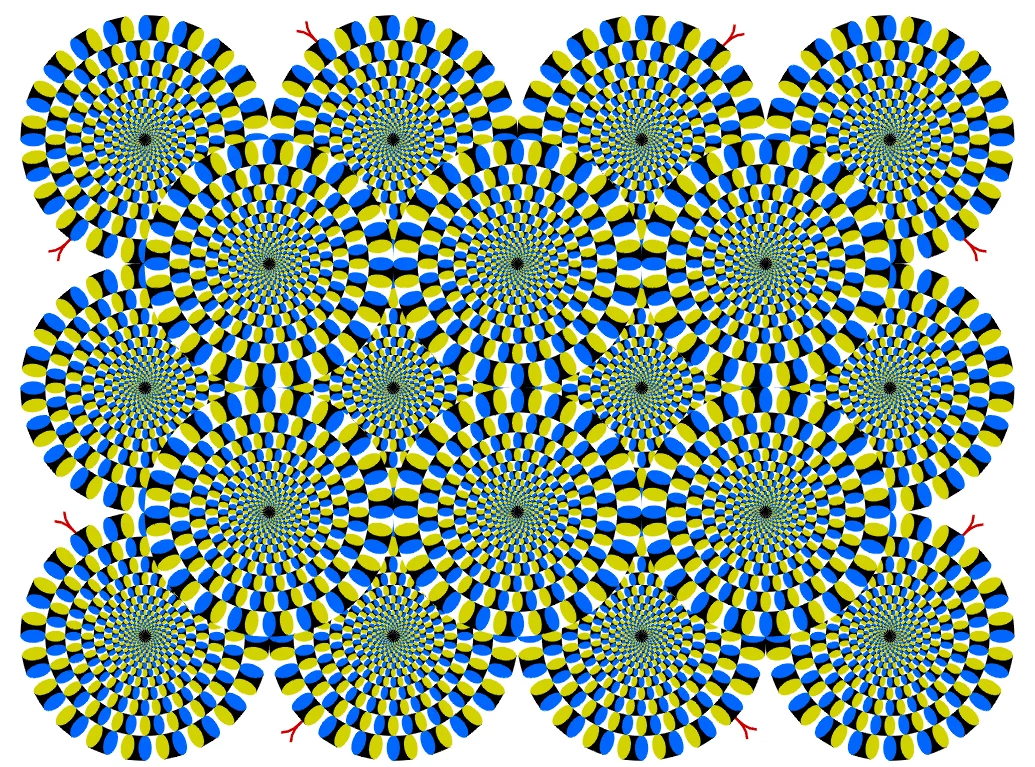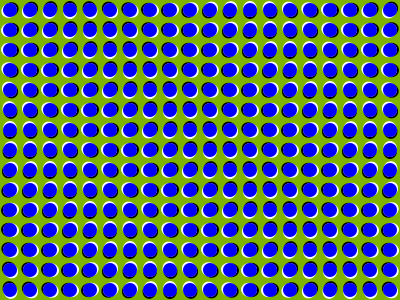
The “Rotating Snakes” illusion, created by Japanese psychologist Akiyoshi Kitaoka, presents a static image that appears to be in motion. This optical illusion consists of several bands of color resembling coiled serpents, which seem to rotate continuously. The phenomenon is a type of peripheral drift illusion, where motion is perceived in the visual periphery despite the image itself being stationary.
The illusory motion is influenced by eye movements, particularly microsaccades—small, involuntary eye movements that occur during visual fixation. When the image is presented in grayscale, most people still perceive motion, but less than in the colored version. This suggests that color contrast plays a significant role in the strength of the illusion. Additionally, fixating on a single part of the image can cause the motion to cease, while shifting one’s gaze around the image maintains the perception of movement.
Research into the neural mechanisms behind this illusion indicates that temporal differences in luminance processing may produce signals that trick the brain’s motion detection system. Studies have shown that the speed of perceived motion correlates with the frequency of microsaccadic eye movements. This interplay between visual input and neural processing exemplifies how our perception of reality can be influenced by complex interactions within the visual system.
Another example of a peripheral drift illusion can be seen in the image below.

